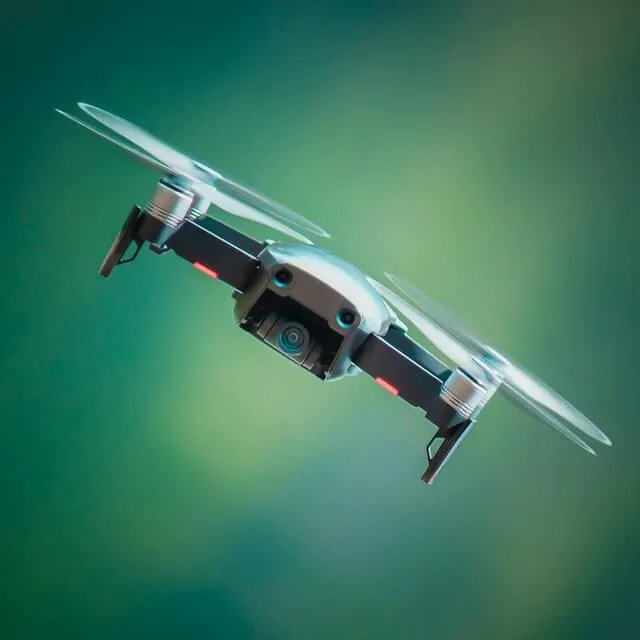After buying a drone, considering drone insurance options should be one of your first moves. Here is everything you should know before getting your drone insurance policy!


In today’s advanced drone industry, the need for drone insurance is becoming more and more prevalent. Drone technology is a valuable investment, and it often represents unique liability risks as drones are classified as aircraft.
Moreover, what happens if a pilot crashes a drone, or worse, crashes into someone? Though we hope drone pilots don't ever experience these unfortunate situations, having the right insurance in place can make all the difference. We at SkyWatch.AI know that insurance can often be a complicated, and even stressful topic. We have prepared answers for today's most critical drone insurance questions that will help ease your mind.
Before getting to the basics, let’s start by simplifying some of the key insurance terms.

Why drone insurance?
Mind the gap. Most homeowners and general liability policies have a broad aircraft exclusion. Drones are classified as aircraft, and thus any bodily injury, property damage, or personal injury caused by drones to third parties, both commercially and recreationally, will not be covered. This exposure to uncovered exposures in homeowners and general liability policies, necessitates drone insurance - especially if you would like to operate commercially. It is imperative to have your policy reviewed by your agent before taking to the skies. If you see an aircraft exclusion in the policy (usually the first one, as exclusions appear in alphabetical order), and no mention of drones coverage granted otherwise, it is a safe bet no coverage for drones exists.
Flying insured means flying responsibly. As a drone pilot and business owner, responsibility is key - both for recreational and commercial flights. No matter how safe the pilot, or airspace, mistakes can and do happen.
Like other liability insurance, drone insurance provides insurance against claims made by third parties for bodily injury and property damage.

Having the proper drone insurance policy can give you the peace of mind you need when flying for commercial or recreational purposes.
Additionally, being a drone insurance policyholder shows your professionalism as a drone pilot. Not only will you have peace of mind, but your clients will too.
What does drone insurance cover?
Drone insurance can be broken down into a few different layers, including but not limited to, liability coverage, hull coverage, and property damage.

Third party liability insurance is the foundation for all drone insurance policies. This coverage protects you against bodily injury and property damage while operating a drone.
As a commercial pilot, the standard minimum liability you will be required to carry is one million dollars. Higher limits are often required by larger firms where more risk is involved.
Hull insurance protects your drone and equipment against physical damage, loss or theft. The hull premium is based on the drone and equipment’s insured value.
Personal and advertising injury refers to rights that people have, that if infringed on, may result in a loss. Not to be confused with bodily injury, when you read personal injury as a drone pilot, think invasion of privacy claims.
How much does drone insurance cost?
Drone insurance pricing reflects inherent risk involved. Pilots who have had drone insurance for many years may notice that their liability premiums have decreased, while hull insurance has increased. The frequency of hull claims compared to liability claims is reflected in these pricing patterns as insurers gain more loss history in this expanding field.
Based on each pilot’s needs, such as the number of drone and use case, drone insurance pricing can greatly vary. The drone industry led to innovation in the insurance industry, and now policies can be sold by the hour, month, or annually.
Depending on the time frame and liability limit, the price can be anywhere from $5/hour to $1000/year.
Typically, drone insurance liability limits range anywhere from $500,000M to $10,000,000M. So when it comes down to buying a policy and deciding what liability limit you need, ask yourself:
- What is the potential risk associated with my flight?
- Am I flying year round, or just per season?
- Do I want to add hull coverage to my policy?
One's hull insurance premium is based on a percentage of the insured value of the drone. A simple example: a drone with a $1,000 insured value with a 10% annual rate would have a premium cost of $100. Deductibles are common on hull insurance but not for liability insurance.
Once you have answered the questions above, you will be able to explore quotes relevant to your needs.
How do I prove that I have drone insurance?
When purchasing a drone insurance policy, your insurer should always provide you with a Certificate of Insurance and policy document. Most of your clients will ask to see this certificate of insurance, and many will request to be listed as additional insured to the policy. You can work with your agent, as this can easily be reflected on your COI.
The COI includes the policyholders full name, the policy number liability limit, policy period, and any additional insured that may be listed.
Have additional questions about drone insurance?
Feel free to contact the team at skywatch@skywatch.ai.











